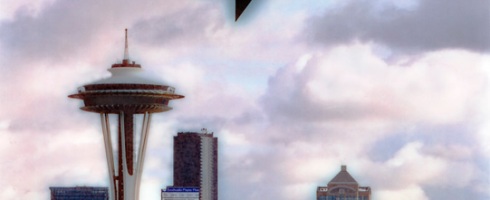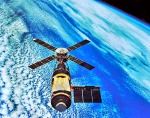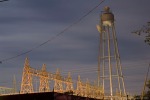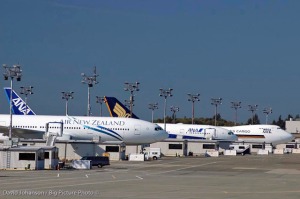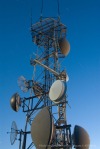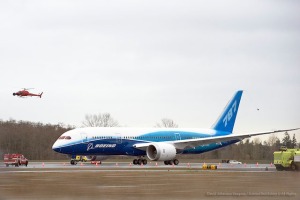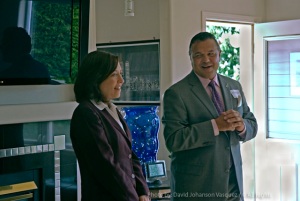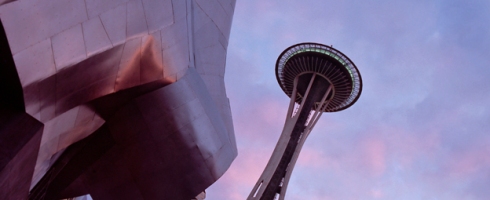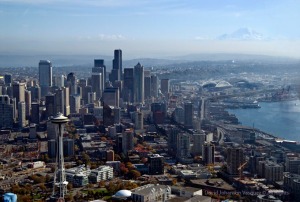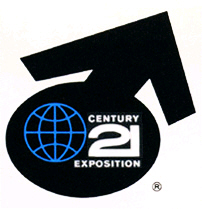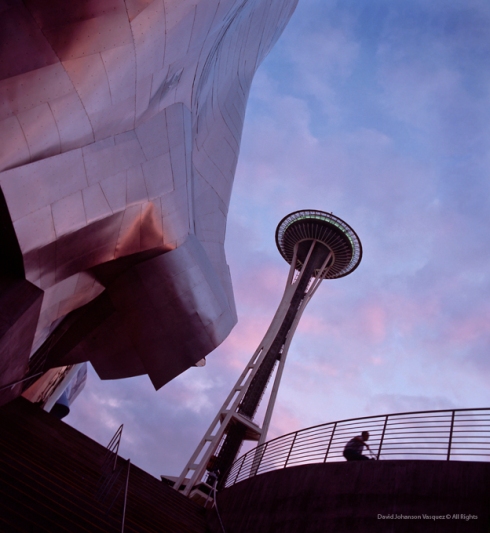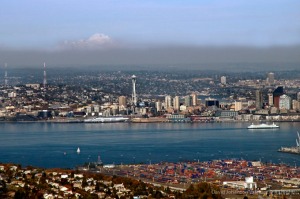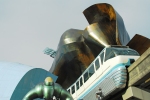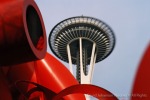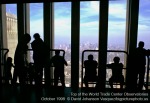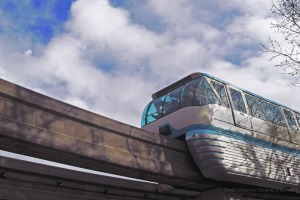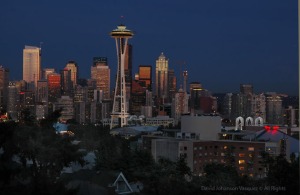
Late 1990’s photo-illustration to promote Real Audio and its affiliates. At that time: RA Vice President of Marketing , Maria Cantwell hired my multimedia services to create this futuristic, virtual reality view of Seattle.
Photos and essay by: David Johanson Vasquez © All Rights Second— Addition
The U.S. is in a must-win race, to continue as the clear leader of global competitiveness in technology and science. No other stakes are higher or ensure greater returns for our nation’s security, economic health and cultural way-of-life.
Senator Maria Cantwell of Washington State has a proven record of properly managing the resources of public and private sector technology. Global leadership requires well-informed oversight, which can fully employ, the most recent developments of science and technology. Ms. Cantwell’s earlier career as a successful executive in an emerging media technology company, gave her exceptional tech industry qualifications. A functional knowledge of computer engineering provided her a proactive view of emerging, 21st-century Information Technology (IT). The Senator serves on five Senate Committees; perhaps the most critical for the nation’s position in world leadership is the Commerce, Science & Transportation Committee.
Washington State is fertile ground for producing world leading, innovative technology companies. Software development, Internet commerce, biotechnology and aerospace industries are the primary economic engines of the Pacific Northwest. It’s fortunate for the State of Washington and the Nation, to have a representative who clearly recognizes the economic and technical potential of these dynamic industries.
Electricity, is, the lifeblood, which our current technologies rely on. Electrical energy is not a luxury; it’s a necessity for our way-of-life, which society society takes for granted. Vigilance from our national leaders is essential for protecting our crucial resources from natural and manmade disasters.
Cantwell’s first major accomplishment as a U.S. Senator began taking shape within the first days of being in office; by her focussing a national spotlight on deceptive energy market manipulations. In December 2001, Enron—a onetime energy giant— filed for Chapter 11 bankruptcy, while laying-off thousands of its employees. Enron had taken extreme advantage of deregulation within the energy industry. Without legislative oversight the company was on a rampage of manipulating energy markets, while overcharging businesses and households millions of dollars.
In the 2005 Energy Bill, Senator Cantwell helped author provisions, which made it a federal crime to manipulate electricity or natural gas markets. Cantwell also helped uncover evidence, which proved, ongoing deceptive schemes were used by Enron traders to target customers. With the energy company’s blatant deception made public, Senator Cantwell successfully stopped the bankruptcy court from forcing customers in Washington State, to pay millions of dollars in “termination fees” for electricity which hadn’t been delivered.
Affordable, reliable electricity was and remains today the essential resource, which allows dynamic industries to thrive in the Pacific Northwest. Boeing aerospace, is a prime example, which could not exist without massive amounts of dependable electricity for its airline manufacturing.
The Senate’s Commerce, Subcommittee on Technology, Innovation and Competitiveness, has few Senators capable of engaging computer industry experts as Senator Cantwell demonstrated, with her IT background. During hearings on High–Performance Computing Vital to America’s Competitiveness, Cantwell was able to facilitate important questions on supercomputing architecture and applications. The Senator also had the opportunity to introduce two industry witnesses from the Washington State, who gave examples of how these technologies were advancing research & development to support manufacturing.
High-performance computing are the latest concepts for maximizing the power of supercomputers and networks for advance scientific research and it’s rapidly being embraced by a variety of key industry sectors. These powerful computer systems reach trillions of calculations per second, enabling discoveries not possible with standard computers. High-level computers are now used in a number of applications such as: accurately forecasting weather fronts, DNA modeling and National Security.
Internet2, which is a next-generation Internet Protocol and optical network, has the bandwidth performance needed for transferring high-volumes of data produced by supercomputers. A new national network, Level 3 Communications can now transfer 100 Gbit/s, which is a 100-percent improvement over Internet2. These high-speed secure networks are primarily used by academic and medical research for universities, in many cases the collaborative R&D will eventually find an industry application.
At the Senate’s subcommittee, witness, Michael Garret, Director, Airplane Performance for the Commercial Airplane Division of the Boeing Company, described to Cantwell and the other Senators how high-performance computing dramatically changed Boeing’s aerospace design process. In one example, Garret shared how Boeing had saved 80-percent, in the number of wing designs for the new, 787 Dreamliner.
If our intention for the Nation is to remain a leader in science, technology and commerce, we need more representatives in the Senate, such as Senator Cantwell. Our national elected representatives must understand the current and future potential of these advanced computer systems—to keep America technologically, economically, and militarily viable. Fortunately, we and our Nation’s Senate have Cantwell to help enable critical question on how to retain our leadership through high-performance computing and a new spectrum of technologies. ~
It’s important I share with you that Maria Cantwell and I have been friends for many years. She hired me to photograph her when she first ran for congress and generously credits my photography for helping her get elected. When she latter became an IT executive, she again hired my multimedia services to help promote and market Real Networks in Seattle. I’ve included some photos of Ms. Cantwell at a May fundraising event with campaign supporters and close friends.
Senator Cantwell has agreed to answer a series of interview questions from me, on science and technology related issues. The format for the interviews has yet to be confirmed, but there will be at least a text version and possibly, a video one as well on the ScienceTechTablet and BigPictureOne multimedia sites. The interviews will take place sometime over this summer. One of my questions will be related to a photo-essay I wrote this year on the current Solar Storm cycle, which will be peaking by 2013. Specifically. her views will be asked of how ready we are—in comparison to the 1989 Solar Storm, which caused Hydro-Quebec’s power grid to crash and leave millions of its customers with no electricity.
I mentioned to Cantell that the Science Technology Engineering & Math (STEM) Advisory for Edmonds School District, which I volunteer as a committee members, will launch a STEM Magnet school at Mountlake Terrace High School for 2012 -2013. The Senator was very enthusiastic with the news, as she is a big supporter of the education program. MLTH was also in her former district when she was a state representative, living in Mountlake Terrace. Questions on how we can attract and support more programs, such as STEM, will be on the interview list.
If you have a science or technology question which relates to the United States for Senator Cantwell, please write it down in the response section bellow this story or email me with your interview question. I will do my best to ask your questions with the time available for the interviews.
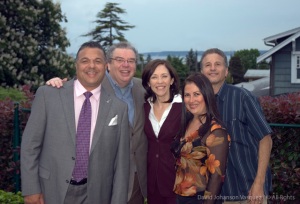
A gathering of friends and supporters with Senator Cantwell. From left to right: Jim Johanson. Patrick MacDonald – former Seattle Times music critic, Maria Cantwell, Carmen lisa Valencia, David A. Johanson

